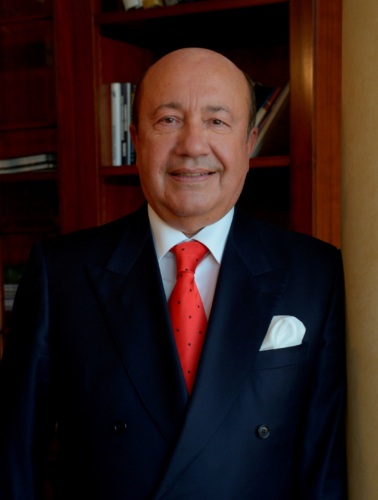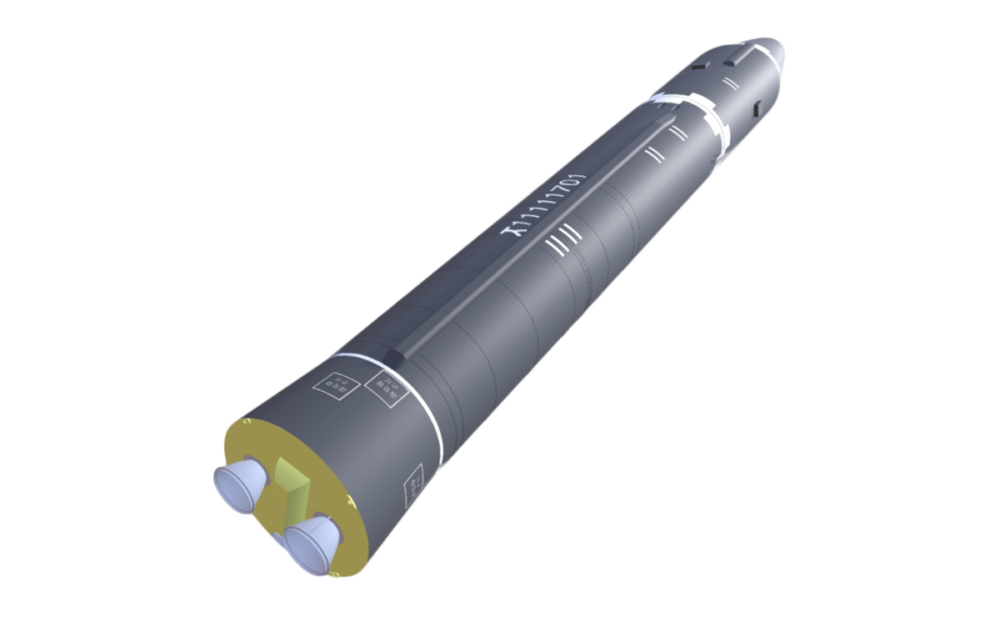
Igor S. Ivanov
Former Minister of Foreign Affairs, Russia
With the attention and resources of state leaders and publics fully occupied by the COVID-19 pandemic, addressing arms control challenges is low on the world’s list of concerns.
Following the abrogation of the Intermediate-Range Nuclear Forces (INF) Treaty in 2019, no steps are being considered for prevention of a new arms race with medium-range missiles. Discussions about extending the 2011 New Strategic Arms Reduction Treaty (New START) between the United States and Russia, beyond its February 2021 expiration date, have stagnated. As a direct effect of the pandemic, on-site inspections, which are a key element of the New START verification regime, have been interrupted. The 50th Review Conference of the Nuclear Non-Proliferation Treaty (NPT), scheduled for April/May 2020 in New York, has been postponed until next year.
COVID-19, however, has not visibly affected the main weapons programs of the United States, Russia, China, and other leading military powers. A new cycle of the nuclear and advanced conventional arms race is gaining momentum. Against the background of the collapse of nuclear arms control regimes, this arms race inevitably will exacerbate controversies among the great powers, creating a high probability of armed conflict and the ensuing risk of nuclear escalation. If, God forbid, this were to happen, the current crisis caused by the pandemic would look like a minor inconvenience.
That is why we strongly believe that COVID-19 must not serve as a pretext to ignore or postpone urgently needed resolution of current arms control controversies.
In particular, it is crucially important to salvage the essence of the INF Treaty. In 2019, the United States announced it would withdraw from the treaty, due to alleged Russian violations (deployment of prohibited missiles) and the massive build-up of such weapons by China (which was not a party to that agreement). Since U.S. plans for possible new missile deployments in Asia are said to be linked to Chinese programs, it is up to those two powers to search for possible mutual accommodation, however difficult this presently looks.
In Europe, U.S. and Russian medium-range missile deployments should be avoided at all costs. They would be highly destabilizing by precipitating mutual planning for preemptive strikes. Such developments also would block any possibility of continuing strategic arms control cooperation, since American intermediate-range missiles in Europe would be perceived by Moscow as threatening a decapitating and disarming strike on Russia’s strategic deterrent, as was Russia’s concern in the early 1980s.
A temporary deal on this issue, until a time when the U.S. and China reach some compromise, should be based on Russia’s proposal to NATO states in late 2019 to agree on a moratorium on deployment of medium-range missile systems in Europe.
Controversies around the INF treaty were not alleviated when, in January 2019, Russian 9M729 (SSC-8) land-based cruise missiles, perceived by the United States and NATO as a treaty violation, were shown to foreign military representatives in an aircraft hangar in Moscow to demonstrate that they technically could not fly at the prohibited range. NATO states did not attend the demonstration and declared that the systems displayed were different from the missiles in question.
Hence the solution should be for the two sides to jointly develop additional means of verification, using confidence-building measures and on-site inspections, to make sure that the missiles deployed in Russian regular units are the same as those demonstrated in Moscow in 2019. In parallel, Russia’s concerns also should be addressed. Moscow claims that U.S. missile defense launchers deployed in Romania and Poland could be used to deploy and launch offensive Tomahawk sea-based cruise missiles. This concern could also be resolved by agreed transparency and on-site inspection provisions.
Equally urgent is the need to address strategic arms control issues in the remaining months before the expiration of the New START treaty. The latest U.S. position is that extension, just like any START follow-on treaty, is conditioned on China’s participation. This is flatly rejected by Beijing, with lukewarm support by Moscow.
We believe that New START extension cannot involve China as it would imply China was joining the treaty – something neither the U.S. nor Russia would welcome since it would legalize China’s right to build up its strategic nuclear forces to the New START ceilings of 700 deployed missiles and bombers and 1,550 warheads (thus increasing its current forces in the two dimensions by 4.5 and 10 times correspondingly).
The New START extension should remain a Russia-U.S. bilateral issue—with two important mutual understandings. First, the new Russian Avangard boost-glide system and Sarmat heavy intercontinental ballistic missiles must be recognized as subjects of all treaty provisions. Second, the motive to extend the treaty should not be just to retain the transparency of the treaty verification regime (as valuable as it is) for a few more years, but, still more importantly, to have time to begin work on a follow-on treaty.
Issues related to a New START follow-on could be settled during this extra time: First, the question of China’s participation, and second, the scope and parameters of further arms reductions and limits.
Regarding China’s participation, it is up to the United States to develop a proposal that would interest China. This would involve devising a U.S.-China balance of parity and stability without stipulating U.S. reductions down to Chinese force levels or legalizing China’s build up to U.S. force levels. Whatever was agreed by the two parties would be considered by Russia when deciding on its participation. The parties also should find a way to engage the United Kingdom and France. In a new multilateral framework, Russia and China would certainly demand inclusion of the other two nuclear weapon states, and there would be no reason to exclude them. It would be fascinating to see how the Trump Administration solves this conundrum.
If forging a trilateral or five-party agreement proves impossible at this time, Moscow and Washington should proceed with plans for a bilateral deal, and its concept may be as follows.
We believe that if the nuclear forces of China, the United Kingdom, and France are not limited, then further deep cuts of the strategic forces of the two major powers (following very substantial reductions since 1991) are not an urgent goal and may be safely postponed. Hence, the New START follow-on ceilings can be lowered by just 100-200 deployed delivery vehicles and warheads (i.e. down to 600-500 and 1400-1300 respectively). Far more important is the scope of the next agreement, which should enhance strategic stability. It is essential that the air-launched nuclear and conventional cruise and hypersonic missiles and nuclear gravity bombs are included under a common warhead ceiling, and that they be counted according to the actual loading of the heavy bombers. Limits on strategic delivery vehicles and warheads should also include the new weapon systems: ground-based intercontinental cruise missiles and long-range autonomous underwater drones, as well as land- and sea-based boost-glide hypersonic systems with ranges defined similar to what was in the SALT and START treaties (e.g. land-based missiles with ranges greater than 5,500 km and sea-based missiles with ranges greater than 600 km). Such weapons should be limited regardless of whether their warheads are nuclear or conventional.
In this way, the most destabilizing long-range strategic systems which blur a clear line between conventional and nuclear warfare would become subject to verifiable arms control (including conventional missiles and low-yield nuclear bombs). Indirectly, their numbers would be limited, since under common ceilings they would “compete” with the number of nuclear-tipped strategic ballistic missiles. The latter would also have to be reduced to allow for ground- and air-launched cruise missiles, hypersonic boost-glide and ram-jet missiles, and underwater nuclear drones under the overall limit.
We recognize that such a treaty would not address a number of old and new potentially destabilizing weapon systems and technologies: tactical nuclear weapons, anti-missile defense, space arms, cyber-warfare, directed-energy weapons, and a great variety of drones with artificial intelligence—to name a few that are most commonly discussed. But those systems and technologies cannot be addressed immediately, either technically or diplomatically. Eventually they might be included in arms control, as well as the engagement of the three other recognized nuclear states, provided that the first steps outlined above are urgently taken to prevent the final collapse of the arms control regimes and process. The perfect should not become the enemy of the good, and the half-century successful history of nuclear arms control repeatedly has offered proof of this principle.
Alexey Arbatov is a former member of parliament of Russia (State Duma) and participant at the START I negotiations. Igor Ivanov is a former Minister of Foreign Affairs of Russia. They are members of NTI’s Board of Directors. Their views are their own.
Sign up for our newsletter to get the latest on nuclear and biological threats.
Assessing the progress made by UN First Committee on furthering international nonproliferation and disarmament goals during its 2007 session. (CNS)
A collection of missile tests including the date, time, missile name, launch agency, facility name, and test outcome.
Information and analysis of nuclear weapons disarmament proposals and progress in Belarus
